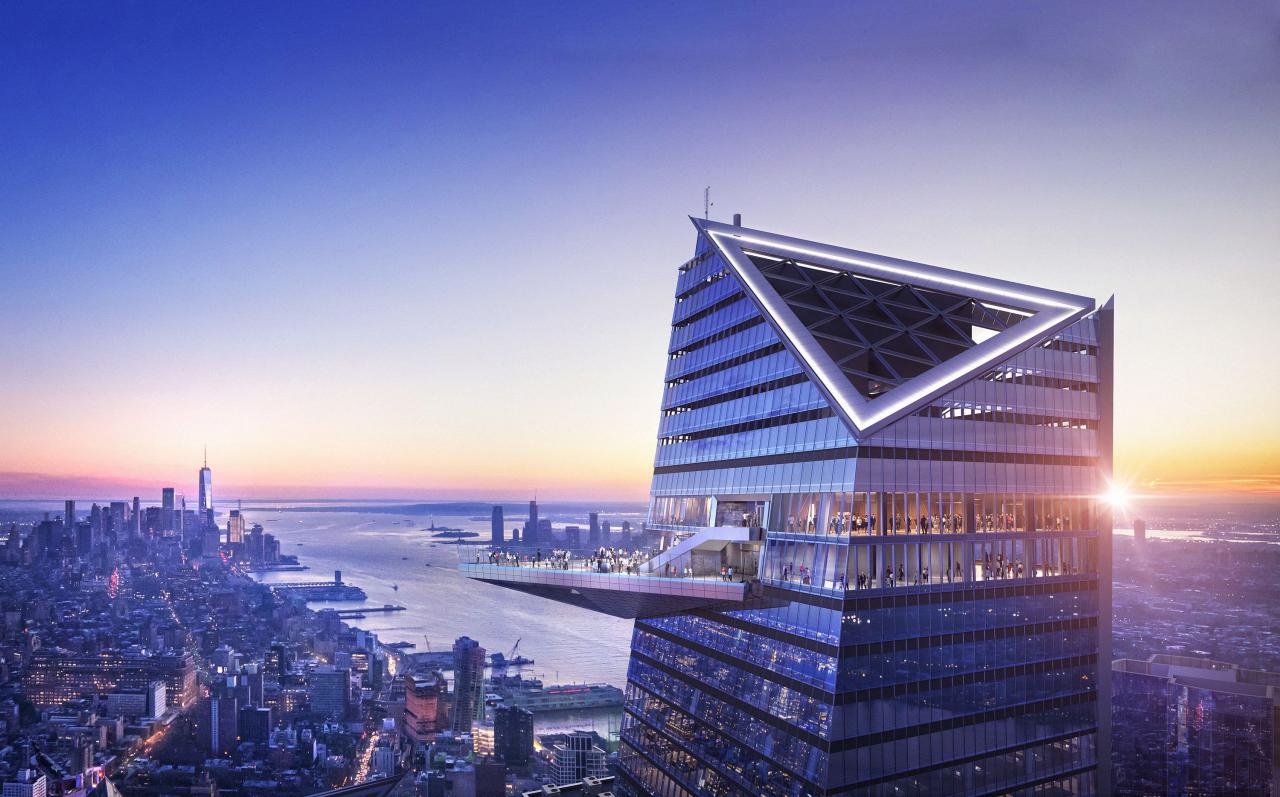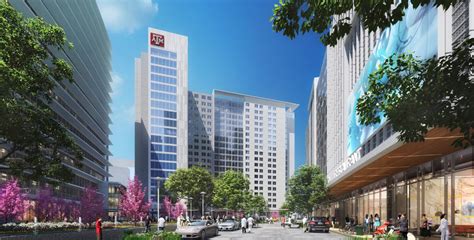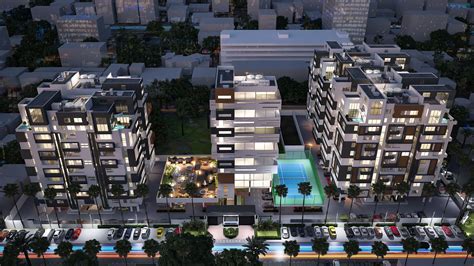In today’s rapidly evolving urban landscapes, skyscrapers and innovative high-rise towers have become more than just architectural marvels—they are symbols of progress, economic might, and futuristic design. As cities continue to expand and transform, these cutting-edge towers dominate metropolitan horizons, reshaping the skylines and influencing the way people live, work, and interact in urban spaces. This article explores the evolution, technology, design innovations, sustainability, and socio-economic impacts of modern high-rise towers, while also delving into the challenges and future trends that will shape the next generation of metropolitan architecture.
Urban centers around the globe are experiencing unprecedented growth, driven by the need for efficient space utilization, sustainable development, and technological integration. The surge in urban populations and the desire for prestigious addresses have led to a renaissance in skyscraper construction and the development of high-tech towers. Unlike traditional buildings, these modern towers incorporate advanced materials, eco-friendly systems, and smart technologies that enable them to adapt to dynamic urban needs.
The evolution of these architectural giants is not just about building higher structures; it is about creating environments that are self-sustaining, energy-efficient, and integrated with digital technology. This comprehensive article covers the following key areas:
A. The historical context and evolution of high-rise towers
B. The integration of technology in modern tower design
C. The impact of cutting-edge towers on urban economies and communities
D. Sustainability and green building practices in skyscraper construction
E. The challenges and future trends in metropolitan tower development
The Evolution of High-Rise Towers
The concept of towering structures dates back centuries, with early examples found in ancient civilizations. However, the modern skyscraper era began in the late 19th and early 20th centuries, largely driven by advances in engineering, the invention of the elevator, and the need to optimize urban real estate. Over time, these structures have transformed dramatically.
Historical Milestones
Historically, the first skyscrapers emerged as a response to the need for efficient land use in bustling urban centers. Early milestones include:
A. The Home Insurance Building (1885): Often considered the world’s first skyscraper, this Chicago building introduced the steel-frame construction technique.
B. The Empire State Building (1931): A symbol of innovation during the Great Depression, it set new standards in both height and design.
C. Modern Developments: In recent decades, towers have embraced eco-friendly designs, digital integrations, and innovative materials to create resilient structures that stand the test of time.
Architectural Transformations
Today’s towers are a far cry from their early predecessors. The transformation in design can be attributed to several factors:
A. Material Advancements: The development of high-strength steel, reinforced concrete, and innovative composites allows for slimmer, taller, and more flexible structures.
B. Structural Engineering: Modern techniques such as tuned mass dampers, aerodynamic shaping, and seismic base isolation ensure that skyscrapers withstand environmental stresses.
C. Aesthetic Evolution: Contemporary towers balance form and function, with designs that not only appeal visually but also maximize interior space and efficiency.
Technological Innovations in Tower Design
Modern high-rise towers integrate state-of-the-art technology that revolutionizes their construction, operation, and maintenance. These technological breakthroughs have set new benchmarks for urban architecture.
Smart Building Systems
The integration of digital technology into building management systems has led to the rise of “smart towers.” These systems offer a range of benefits:
A. Energy Management: Advanced sensors and automated systems continuously monitor and optimize energy usage, reducing wastage and operational costs.
B. Security Enhancements: Intelligent surveillance systems, biometric access controls, and integrated alarm systems bolster building security.
C. Maintenance and Monitoring: Predictive maintenance tools use real-time data analytics to anticipate system failures, ensuring that repairs are made before issues escalate.
Digital Twin Technology
One of the most revolutionary technological advancements is the development of digital twin technology. A digital twin is a virtual replica of a physical building that allows architects, engineers, and city planners to simulate real-world conditions and optimize performance.
A. Real-Time Analysis: Digital twins provide live data feeds that help monitor structural integrity and system performance.
B. Scenario Testing: Planners can simulate various urban scenarios, from natural disasters to peak occupancy levels, to prepare adaptive strategies.
C. Enhanced Collaboration: Digital models enable stakeholders to collaborate more effectively, ensuring that design and operational decisions are data-driven and transparent.
Innovative Construction Techniques
Modern construction methods have dramatically reduced building times and costs while improving structural integrity. These include:
A. Prefabrication: The use of prefabricated components speeds up construction and reduces on-site waste.
B. 3D Printing: Emerging 3D printing techniques are being used to create intricate design elements and even entire building components with precision.
C. Robotics and Automation: Robotics in construction not only increase efficiency but also improve safety by handling hazardous tasks.
Economic and Social Impacts
Cutting-edge towers have far-reaching impacts on urban economies and the lives of city residents. They are catalysts for economic development, cultural expression, and social change.
Economic Boost and Investment
High-rise towers are often seen as investments that yield significant economic benefits:
A. Increased Property Value: Iconic towers often elevate the status of their surrounding areas, driving up real estate values and attracting premium businesses.
B. Job Creation: From construction to operations, the development and maintenance of these structures create numerous job opportunities across various sectors.
C. Tourism and Branding: Unique architectural landmarks serve as tourist attractions and help cities establish a global identity, further attracting international investment.
Urban Regeneration
Many metropolitan centers have experienced urban regeneration due to the development of modern towers. This process involves the revitalization of underdeveloped areas, transforming them into vibrant urban districts.
A. Infrastructure Upgrades: The development of towers often accompanies improvements in transportation, utilities, and public spaces.
B. Cultural Hubs: Modern towers can become cultural landmarks, hosting art exhibitions, conferences, and community events.
C. Business Ecosystems: They frequently house offices, retail spaces, and entertainment venues, fostering a dynamic ecosystem that encourages innovation and entrepreneurship.
Social Dynamics and Lifestyle Enhancements
Beyond the economic advantages, cutting-edge towers significantly influence the social fabric of cities:
A. Enhanced Living Standards: Incorporating smart technologies and eco-friendly designs, modern towers offer residents improved comfort, security, and energy efficiency.
B. Community Interaction: Many towers integrate public spaces, such as rooftop gardens, lounges, and recreational areas, fostering community engagement and social interaction.
C. Work-Life Balance: With mixed-use developments, residents have easy access to work, shopping, and leisure activities, reducing commuting times and enhancing quality of life.
Sustainability and Green Building Practices
Sustainability has become a cornerstone of modern urban development, and high-rise towers are no exception. Sustainable practices are integrated at every stage of a tower’s lifecycle—from design and construction to operation and demolition.
Green Building Materials
Modern towers employ environmentally friendly materials that reduce carbon footprints and enhance energy efficiency:
A. Recycled Materials: The use of recycled steel, glass, and concrete minimizes the environmental impact of raw material extraction.
B. Low-Emission Products: Materials that emit low or zero volatile organic compounds (VOCs) improve indoor air quality and occupant health.
C. Sustainable Sourcing: Architects are increasingly opting for materials sourced from sustainable, renewable resources.
Energy-Efficient Design
Designing energy-efficient towers is paramount for reducing operational costs and mitigating environmental impact. Key design strategies include:
A. Facade Innovations: Smart glass and dynamic facades adjust to sunlight, optimizing natural lighting while reducing heat gain.
B. Renewable Energy Integration: Many towers incorporate solar panels, wind turbines, or geothermal systems to generate clean energy on-site.
C. Natural Ventilation: Architectural features that promote cross-ventilation reduce reliance on artificial air conditioning systems.
Water Conservation and Management
Efficient water management is another critical aspect of sustainable tower design. Modern high-rises incorporate innovative systems to conserve and recycle water:
A. Rainwater Harvesting: Systems that capture and store rainwater for irrigation and non-potable uses reduce the demand on municipal water supplies.
B. Greywater Recycling: Recycling water from sinks and showers for toilet flushing and landscape irrigation conserves freshwater resources.
C. Smart Irrigation: Automated irrigation systems use sensors to determine soil moisture levels, ensuring optimal water usage in green areas.
Waste Reduction and Recycling
High-rise towers are also designed to handle waste in an environmentally responsible manner. Key strategies include:
A. Integrated Recycling Systems: On-site recycling facilities encourage residents and businesses to separate and process waste.
B. Waste-to-Energy: Innovative systems convert organic waste into renewable energy, reducing landfill dependency.
C. Construction Waste Management: During the building process, strategies are implemented to minimize waste and repurpose materials wherever possible.
Challenges in Metropolitan Tower Development
Despite their many advantages, the construction and operation of cutting-edge towers are not without challenges. These challenges must be carefully managed to ensure that these structures can deliver long-term benefits.
Financial and Economic Barriers
Developing a high-rise tower requires significant financial investment. Economic challenges include:
A. High Construction Costs: Advanced technologies and sustainable materials often come at a premium, driving up project budgets.
B. Financing Difficulties: Securing funding from investors, banks, and government agencies can be challenging, especially in uncertain economic climates.
C. Return on Investment: The long-term financial viability of these projects depends on market demand, property values, and operational efficiency.
Regulatory and Zoning Issues
Urban development is governed by strict regulations and zoning laws, which can pose hurdles for innovative projects:
A. Building Codes: Modern towers must comply with rigorous safety, structural, and environmental codes that may vary by region.
B. Zoning Restrictions: Local zoning laws may limit the height, density, or design of new buildings, affecting project feasibility.
C. Permitting Delays: Securing the necessary permits can be a lengthy process, potentially delaying project timelines.

Technological Integration and Cybersecurity
The reliance on digital technologies and interconnected systems exposes high-rise towers to potential technological risks:
A. System Integration: Merging new smart technologies with legacy systems can lead to compatibility issues.
B. Data Security: The vast amount of data generated by smart systems requires robust cybersecurity measures to prevent breaches.
C. Maintenance Complexity: As technology evolves rapidly, ensuring that building systems remain updated and functional can be a continual challenge.
Social Acceptance and Adaptation
While high-rise towers offer many benefits, they also require cultural and behavioral shifts among urban residents:
A. Public Perception: The introduction of advanced, high-tech structures can face resistance from communities accustomed to traditional urban environments.
B. Lifestyle Adjustments: Residents may need to adapt to new ways of interacting with digital systems and sustainable practices in their daily lives.
C. Equitable Access: Ensuring that all socio-economic groups benefit from these developments is critical to fostering inclusive urban growth.
Future Trends and Innovations
The future of metropolitan high-rise towers is promising, with continuous innovations set to redefine urban living. Emerging trends include:
The Rise of Biophilic Design
Biophilic design integrates natural elements into urban architecture, promoting well-being and environmental harmony:
A. Green Facades: Buildings designed with vertical gardens and living walls improve air quality and aesthetic appeal.
B. Interior Green Spaces: Incorporating indoor gardens and natural light not only enhances comfort but also boosts productivity.
C. Natural Materials: The use of organic materials in construction fosters a connection between residents and nature.
Adaptive and Resilient Infrastructure
As cities face increasing environmental challenges, resilience has become a key focus in tower design:
A. Climate-Adaptive Features: High-rise towers are being designed to withstand extreme weather, including hurricanes, earthquakes, and floods.
B. Modular Construction: Modular designs allow for easier retrofitting and upgrades, ensuring buildings remain functional over long periods.
C. Resilience Hubs: Towers may incorporate spaces that serve as community resilience centers during emergencies.
Integration of Artificial Intelligence (AI)
AI is expected to play an even greater role in managing and optimizing urban towers:
A. Predictive Analytics: Enhanced AI algorithms will further improve predictive maintenance and energy management.
B. Automated Operations: The integration of AI in building management systems will lead to fully automated processes, reducing human error and operational costs.
C. User-Centric Experiences: AI-driven platforms will personalize services for residents, from climate control to security management, enhancing the overall living experience.
Smart City Ecosystems
Modern high-rise towers are part of a broader smart city ecosystem. In the coming years, the synergy between various urban systems will become even more pronounced:
A. Interconnected Networks: Towers will be seamlessly connected with public transportation, utilities, and emergency services through integrated digital platforms.
B. Data-Driven Urban Planning: The wealth of data generated by smart towers will help city planners make informed decisions about urban development and resource allocation.
C. Collaborative Urban Models: Partnerships between private companies, government bodies, and research institutions will drive innovation in sustainable urban living.
Global Case Studies and Iconic Examples
Cities around the world are showcasing how cutting-edge towers can redefine metropolitan skylines. Some notable examples include:
Burj Khalifa, Dubai
As the tallest building in the world, the Burj Khalifa remains an iconic symbol of engineering prowess and modern luxury. Its design incorporates advanced cooling systems, smart elevators, and energy-efficient lighting. The tower’s presence has spurred economic growth and tourism in Dubai, setting a benchmark for future developments.
Shanghai Tower, China
Shanghai Tower is celebrated not only for its height but also for its sustainable design features. The tower incorporates a double-skin facade for improved insulation and uses renewable energy sources to minimize its carbon footprint. It stands as a testament to China’s commitment to integrating innovation with sustainability.
One World Trade Center, New York City
One World Trade Center is both a memorial and a modern high-rise that symbolizes resilience. Designed with state-of-the-art security and environmental technologies, the tower reflects New York City’s vision for a sustainable, secure future in the wake of past tragedies.
The Shard, London
The Shard’s unique design and integration of mixed-use spaces have redefined London’s skyline. Combining offices, residences, restaurants, and public viewing platforms, The Shard exemplifies how a single tower can serve multiple urban functions while prioritizing energy efficiency and sustainability.

Strategies for Successful Urban Tower Projects
For cities looking to embrace the future of metropolitan architecture, several strategies are key to ensuring that high-rise projects are both innovative and sustainable.
Comprehensive Planning and Stakeholder Engagement
Successful urban tower projects require careful planning and collaboration:
A. Integrated Urban Design: Planners must consider transportation, green spaces, and community facilities as integral parts of tower developments.
B. Public-Private Partnerships: Collaborations between government agencies, private developers, and technology providers can share risks and benefits.
C. Community Involvement: Engaging local residents and businesses early in the planning process fosters a sense of ownership and ensures that projects meet real community needs.
Investment in Research and Development
Innovation in high-rise construction relies heavily on ongoing research:
A. Material Science Research: Continuous exploration of new, sustainable materials can lead to more efficient and resilient tower designs.
B. Technology Integration: Investing in smart systems and digital infrastructure is essential for optimizing building performance and reducing operational costs.
C. Pilot Programs: Implementing pilot projects to test innovative ideas on a smaller scale can provide valuable insights before full-scale development.
Policy Support and Regulatory Frameworks
Governments play a crucial role in facilitating cutting-edge tower projects through supportive policies:
A. Incentive Programs: Tax incentives, grants, and subsidies can encourage developers to adopt sustainable practices and smart technologies.
B. Streamlined Permitting: Simplifying permitting processes without compromising safety or environmental standards can accelerate project timelines.
C. Regulatory Harmonization: Aligning local, regional, and national building codes ensures consistency and fosters innovation.
The Path Forward: Embracing the Future of Urban Skylines
As cities continue to grow and face new challenges, the evolution of high-rise towers will be a critical element in shaping the future of urban life. The convergence of technology, sustainability, and innovative design is driving a paradigm shift in metropolitan development. Cutting-edge towers will not only be the physical landmarks of our cities but will also serve as hubs of economic activity, cultural exchange, and social interaction.
Looking ahead, several key factors will determine the success of future urban tower projects:
A. Adaptability: The ability to incorporate emerging technologies and adjust to changing environmental conditions will be crucial.
B. Sustainability: Ongoing commitment to green building practices, renewable energy, and resource efficiency will remain at the forefront of design strategies.
C. Community Focus: Towers that prioritize human well-being and foster inclusive urban communities will lead the way in modern urban development.
Conclusion
Cutting-edge towers dominating metropolitan horizons are not merely about achieving greater heights—they represent a synthesis of technology, sustainability, and visionary urban planning. These architectural marvels are redefining city skylines, creating economic opportunities, and enhancing the quality of urban life. By integrating smart building systems, sustainable design principles, and digital innovations, modern high-rise towers are set to become the cornerstone of resilient, efficient, and vibrant urban ecosystems.
The journey from early skyscrapers to today’s state-of-the-art towers has been marked by technological breakthroughs, creative design solutions, and an unwavering commitment to sustainability. As cities continue to adapt to the challenges of the 21st century, the future of urban architecture promises to be both inspiring and transformative. The innovations discussed in this article—ranging from digital twin technology to biophilic design and AI-driven management systems—illustrate the immense potential for reimagining urban living.
For architects, urban planners, investors, and policymakers, the path forward lies in fostering collaboration, investing in research and development, and embracing new technologies that harmonize with nature. As metropolitan centers expand and evolve, cutting-edge towers will not only dominate the horizon but also serve as beacons of progress, resilience, and sustainable development for generations to come.














